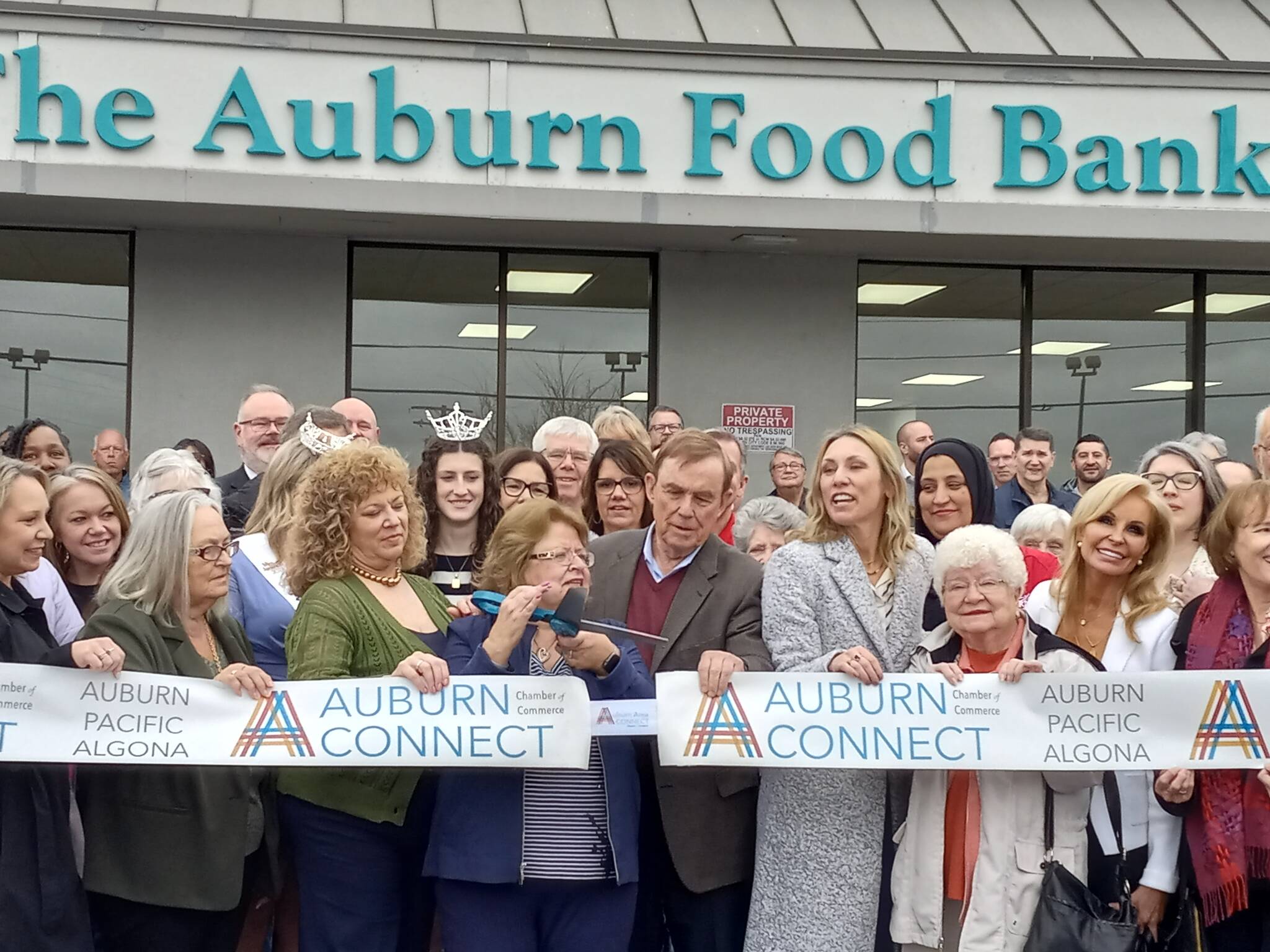The single-story building at 2814, 2816, and 2818 Auburn Way North sits on 2.63 acres, has a total gross area of 29,074 square feet, and provides ample room for parking.
But much more important than those facts about the Auburn Resource Center is what happens inside and why it matters so much.
First, it is a centralized, social service hub, where various nonprofit organizations come together to offer their services, ranging from health care and financial assistance to support housing. It also helps clients with ID and documents, provides access to substance abuse treatment, is home to the Auburn Community Court, and, since late 2023, the Auburn Food Bank.
Every week, the center, the first such “one-stop shop” in King County, opens its doors to the community.
But now the city says the building it purchased in 2024 simply can’t meet the growing needs of the community, fulfill its intended purpose of providing additional leasing opportunities for future service providers, and add community meeting space.
At an Auburn City Council work session on June 9, Kent Hay, Human Services Director for the city of Auburn, and Community Development Block Grant Coordinator Jody Davison, introduced a proposal for the city apply to the federal department of Housing and Urban Development (HUD) and take out a $3 million Section 108 Loan to support the proposed redevelopment and build-out of the center because the city is short of the money it would require.
The proposal calls for modification of the parts of the building that the Auburn Resource Center and Auburn Community Court use, allowing those areas to do double-duty as public meeting spaces when they aren’t being used.
The plan also calls for the addition of:
• A conference room.
• Private meeting spaces.
• A reception area.
• Upgraded, accessible restrooms for clients.
The renovation would also address plumbing, roof and fire sprinkler systems, electrical upgrades and add office spaces. The Community Court adjacent to the center has a judge’s chamber with a private restroom, but there aren’t enough restrooms to meet the need today.
To obtain the loan, the project would have to meet all of HUD’s national objectives, which, Davison said, it does:
• More than 38% of the surrounding area’s residents fall below the HUD median-family-income limit.
• Because the city now owns the building, the project falls under the category of reconstruction of a publicly-owned facility, which allows the city to apply for the loan.
• It does now, and will continue, Davison said, to provide services to a broad range of low-income Auburn residents.
About the loan
The loan request is for up to $3 million, which is the city’s current borrowing power from 2024. Davison said the redevelopment and rehabilitation of the court space and the resource center are the sole purposes of the loan request. The funds for the loan would be drawn on a reimbursement basis.
Davison said the final loan balance at the project’s completion “would most likely,” end up below than the initial $3 million request.
“It is HUD’s guidance is that we go ahead and submit an application for up to $3 million, knowing the project would be less that amount,” Davison explained. “This gives us flexibility, with changing prices, tariffs and all kinds of things that impact construction costs, that allow us the freedom to be able to complete our project.”
At the moment, the cost estimate is still in the hands of the project’s architect, so Hay and Davison can only assume until it is returned that the total cost of construction would be about $2.4 million.
HUD allows jurisdictions to borrow up to five times their community block grant allocation, which is $584,178 for 2025, $35,000 less than Auburn’s 2024 allocation. HUD allows cities to spend the funds directly — which Davison said it plans to do — or use the money as a loan pool to a sub-recipient.
All of the final details of the loan, including the payment amount, the interest rate, the introductory interest rate, the length of the loan, and all of the service fees entailed in taking out a loan would be determined in underwriting with HUD.
“We have up to 20 years pay it back, although plan A is to accomplish that in about six and a half years,” Davison said of the loan. “The loan starts with a variable rate. It does allow the city to switch to a fixed rate at a later date, should that variable rate become unfavorable to the city.”
The loan repayment, Plan A, is to be funded directly from the city’s full entitlement to Community Development Block Grant funds, which again is $584,178.
“We don’t have any plans to use that annual allocation for any other project during the loan period,” Davison said.
There will be no parking lot construction, although anticipated adjustments for safe parking and Auburn Food Bank deliveries will be needed to accommodate them and for construction crews.
Should the future HUD allocations be reduced, the city would commit some of its Human Services Grants to make up the difference so it can make the annual debt payment. Should funding fall below the annual payment amount, the city would commit its annual allocation as collateral.
Councilmember Tracy Taylor asked about the construction timeline.
“Starting roughly in Decemberish, or so, and then having it reopen by December 2026. Realistically, is that an obtainable goal?”
“Realistically, I have been told that nine months is very doable,” Davison responded.


